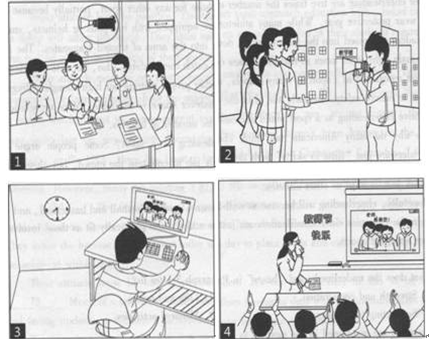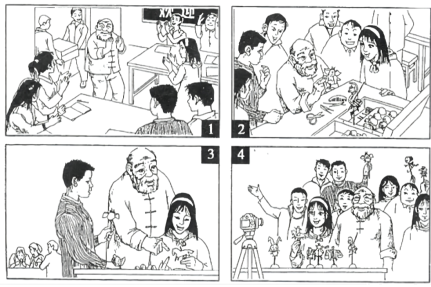1 . Current Culture: Is Common Culture Alive?
The digitizing and globalizing world is changing the working of culture. As some see it, cities and nations are losing their common culture and their general spirit: people can no longer count on those around them valuing any of the same music or films. Others argue that a common culture is not dying so much as changing forms: it is less and less attached to a particular area and ever more linked to global networks.
The facts lead to the change that anyone can become a cultural producer today, that the culture is increasingly available everywhere you want it, and whenever you want it, not just in the two months after the movie or book came out. Cultural possibilities have multiplied as a result, but the change also means fewer cultural moments. It is easy to find the change in terms of loss of diversity of society. So what will it mean if globalization turns us into one wide world culture?
For the enthusiasts of these changes, culture is not about popular artists or books, but centers on platforms like Google and Wikipedia, where every variety of culture brings about the exchange of knowledge and ideas, and makes connections across boundaries. It is perhaps debatable whether two people who have participated in such websites, but in totally different corners of them, have had a cultural experience in common. In fact, these platforms become very successful with a large crowd of people, who build things together, share information, and forward articles back and forth.
There are still more questions. What does it mean for the future of countries that culture now goes beyond the limits of the nation? Is there anything to defend and preserve in the passing cultural world, or is that merely to favor pen over printing press, horse over automobile?
Up to now a growing quantity of culture has been globally spreading and developing. More individuals (个人) than ever have the chances to be makers of culture, even if that means more to choose from and fewer standards to be reached in common. What it means is this strange feeling: that of being more connected than ever, with one-click access to so much of the cultural harvest around the world, and yet, of being starved for having similar interests and opinions with others, concerned only with ourselves.
1. In Paragraph 1 the author indicates ______.| A.the missing of common culture |
| B.the cultural diversity among people |
| C.the disadvantage in the digitizing society |
| D.the double standard of cultural evaluation |
| A.people feel satisfied with the current culture |
| B.enthusiasts look for current culture from famous artists |
| C.disappearance of common culture is a problem to be solved |
| D.common culture may exit into websites that connect the world |
| A.agreement with common culture | B.individuals as cultural producers |
| C.popular artists and books available | D.a reduction in development of culture |
| A.Uninterested. | B.Approving. | C.Uncertain. | D.Critical. |
| A.A bike. | B.A camera. | C.A pad. |
3 . A trip across the Pacific will guarantee you a different experience with a tipping culture you’ve never come across in China.
In the US, giving a little
Though US national law
So how should you tip if you are in the US?
Yet there is an
Other service workers also receive tips. For taxi drivers, 15 percent is the norm (标准),
Today, you can even pay tips on a credit card. When receiving a copy of the bill to sign, you
are
| A.good | B.pocket | C.extra | D.lucky |
| A.method | B.practice | C.way | D.agreement |
| A.requires | B.believes | C.hopes | D.agrees |
| A.rarely | B.usually | C.seldom | D.always |
| A.put up | B.take up | C.hold up | D.make up |
| A.praises | B.prizes | C.awards | D.rewards |
| A.Fortunately | B.Naturally | C.Normally | D.Surprisingly |
| A.bill | B.note | C.check | D.tip |
| A.expected | B.limited | C.illegal | D.casual |
| A.superb | B.poor | C.splendid | D.new |
| A.example | B.incident | C.exception | D.opportunity |
| A.provide | B.pay | C.charge | D.demand |
| A.need | B.should | C.must | D.might |
| A.put | B.live | C.work | D.rely |
| A.less | B.bigger | C.more | D.smaller |
| A.eager | B.free | C.willing | D.delighted |
| A.Though | B.Now that | C.As if | D.When |
| A.dilemma | B.enjoyment | C.headache | D.change |
| A.stay | B.bear | C.bring | D.take |
| A.terrible | B.various | C.valuable | D.fine |
注意:1.词数不少于60;
2.短文的开头已给出,不计入总词数。

______________________________________________________________________________
______________________________________________________________________________
______________________________________________________________________________
______________________________________________________________________________
______________________________________________________________________________
______________________________________________________________________________
5 . The Enigma (谜) of Beauty
The search for beauty spans centuries and continents. Paintings of Egyptians dating back over 4,000 years show both men and women painting their nails and wearing makeup. In 18th-century France, wealthy noblemen wore large wigs (假发) of long, white hair to make themselves attractive. Today, people continue to devote a lot of time and money to their appearance.
There is at least one good reason for the desire to be attractive: beauty is power. Studies suggest that good-looking people make more money, get called on more often in class, and are regarded as friendlier.
But what exactly is beauty? It’s difficult to describe it clearly, and yet we know it when we see it. And our awareness of it may start at a very early age. In one set of studies, six-month-old babies were shown a series of photographs. The faces on the pictures had been rated for attractiveness by a group of college students. In the studies, the babies spent more time looking at the attractive faces than the unattractive ones.
The idea that even babies can judge appearance makes perfect sense to many researchers. In studies by psychologists, men consistently showed a preference for women with larger eyes, fuller lips, and a smaller nose and chin while women prefer men with large shoulders and a narrow waist. According to scientists, the mind unconsciously tells men and women that these traits — the full lips, clear skin, strong shoulders — equal health and genetic well-being.
Not everyone thinks the same way, however. “Our hardwiredness can be changed by all sorts of expectations — mostly cultural,” says C. Loring Brace, an anthropologist at the University of Michigan. What is considered attractive in one culture might not be in another. Look at most Western fashion magazines: the women on the pages are thin. But is this “perfect” body type for women worldwide? Scientists’ answer is no; what is considered beautiful is subjective and varies around the world. They found native peoples in southeast Peru preferred shapes regarded overweight in Western cultures.
For better or worse, beauty plays a role in our lives. But it is extremely difficult to describe exactly what makes one person attractive to another. Although there do seem to be certain physical traits considered universally appealing, it is also true that beauty does not always keep to a single, uniform standard. Beauty really is, as the saying goes, in the eye of the beholder.
1. People’s ideas about beauty ________.| A.have existed since ancient times |
| B.can be easily described |
| C.have little influence on a person’s success |
| D.are based upon strict criteria |
| A.were rated for their appearance |
| B.were entered in a beauty contest |
| C.were shown photos of a group of college students |
| D.were able to tell attractive faces from unattractive ones |
| A.qualities | B.measurements |
| C.judgments | D.standards |
| A.the ideas of beauty vary as people grow up |
| B.the search for beauty is rooted in lack of confidence |
| C.the standards for beauty are based on scientific researches |
| D.the understanding of beauty depends on cultural backgrounds |
假如你是红星中学学生李华。根据以下四幅图的先后顺序,介绍在“传统文化进校园“活动中,面向人艺术家学习捏面人的过程。并以”A Day with a Craftsman”为题,给校刊”英语角“写一篇英文稿件。
注意:词数不少于60.
提示词:一个面团a piece of dough 面人dough figurine




